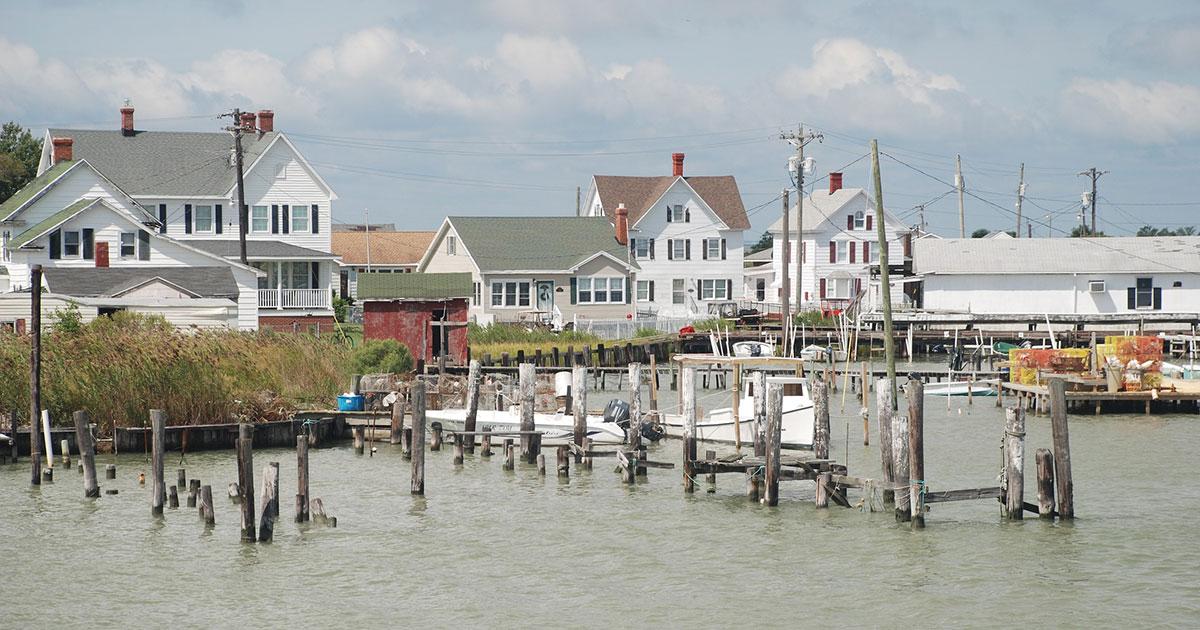Ecologists from the University of Maryland Center for Environmental Science and the University of Michigan are forecasting a large Chesapeake Bay "dead zone" in 2019 due to well-above-average river flows associated with increased rainfall in the watershed since last fall.
"The forecast this year reflects the high levels of precipitation that have been observed across the Bay's watershed," said report co-author Jeremy Testa of the University of Maryland Center for Environmental Science. "The high flows observed this spring, in combination with very high flows late last fall, are expected to result in large volumes of hypoxic and anoxic water."
The bay's hypoxic (low oxygen) and anoxic (no oxygen) zones are caused by excess nutrient pollution, primarily from agriculture and wastewater. The excess nutrients stimulate an overgrowth of algae, which then sinks and decomposes in the water. The resulting low oxygen levels are insufficient to support most marine life and habitats in near-bottom waters, threatening the bay's crabs, oysters and other fisheries.
This summer's Chesapeake Bay hypoxic or "dead zone," an area of low oxygen that can kill fish and other aquatic life, is expected to be about 2.1 cubic miles, while the volume of water with no oxygen is predicted to be between 0.49 and 0.63 cubic miles during early and late summer.
The predicted volumes are larger than the dead zone observed during the summer of 2018 and would be among the four largest in the past 20 years. Measurements of the Chesapeake Bay's dead zone go back to 1950, and the 30-year mean maximum dead zone volume is 1.74 cubic miles.
"The forecast is not surprising considering the near-record high flows in 2018 that have continued into 2019," said Bruce Michael, director of the Resource Assessment Service at the Maryland Department of Natural Resources. "That said, bottom dissolved oxygen concentrations are improving over the long-term in Maryland's portion of the Chesapeake Bay, indicating our efforts to reduce nutrient pollution throughout the entire watershed are improving water quality conditions, helping to support fish, shellfish and our aquatic resources."
The Maryland Department of Natural Resources will conduct bimonthly Bay water quality monitoring cruises June through August to track Bay summer hypoxia. Results from each monitoring cruise will be available on the Department's Eyes on the Bay website.
The University of Maryland Center for Environmental Science's Chesapeake Bay Report Card released earlier this spring gave the Bay a grade of "C" in 2018, in part due to the extreme precipitation. Spring rainfall plays an important role in determining the size of the Chesapeake Bay "dead zone." This year, exceptionally high spring rainfall and streamflow is transporting nitrogen to tidal waters in amounts above the long-term average, according to the U.S. Geological Survey, which provides the nitrogen-loading estimates used to generate the annual hypoxia forecast.
In spring 2019, the Susquehanna River delivered 102.6 million pounds of nitrogen into the Chesapeake Bay. The Potomac River, as measured near Washington, D.C., supplied an additional 47.7 million pounds of nitrogen, according to USGS. This is well-above long-term averages of 80.6 million pounds from the Susquehanna and 31.8 million pounds from the Potomac. Loads from the Susquehanna have not been this high since 2011.
"Managing estuarine responses to changing conditions on the landscape continues to be one of the nation's environmental challenges," said Joel Blomquist, hydrologist for the U.S. Geological Survey (USGS). "The science partnership in the Chesapeake Bay is setting the standard for supporting environmental managers with observation-based science."
"This year's forecast is for the fourth largest dead zone in the past 20 years, illustrating that more work needs to be done," said University of Michigan aquatic ecologist and report coauthor Don Scavia. "The Chesapeake Bay dead zone remains considerably larger than the reduction goals, and we'll never reach those targets unless more is done to reduce nutrient pollution."
The bay outlook is based on models developed at the University of Michigan and the University of Maryland Center for Environmental Science, with funding provided by the National Oceanic and Atmospheric Administration and data generated by the United States Geological Survey and Maryland Department of Natural Resources.
Throughout the year, researchers measure oxygen and nutrient levels as part of the Chesapeake Bay Monitoring Program, run by the Maryland Department of Natural Resources and the Virginia Department of Environmental Quality. This year's findings will be released in the fall.
For more information on the 2019 hypoxia forecast, click here.
Story by University of Maryland Center for Environmental Science (UMCES)



